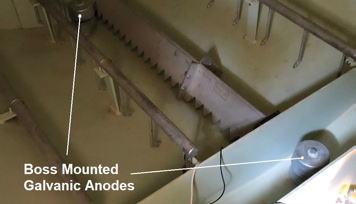This article is an effort to provide information about the types and structure of the process vessels used in petroleum industries, concepts for the use of cathodic protection and various factors involved in designing galvanic anode protection systems such as surface area for protection, coating breakdown factors, current density considerations, electrolyte resistivity, anode selection criteria, and design life considerations. The Cathodic Protection designing of process vessels is difficult and critical due to enclosed and extreme electrolyte conditions of non-ambient temperature, pressure, velocity, chemical compositions and hazards to the environment. Since these conditions cause adverse effects like high corrosion activity, cathodic protection depolarization and higher anode consumptions, it is important to take special care while designing. Another limitation is the cathodic protection system effectiveness cannot be monitored except for anode consumption rate, therefore it is difficult to evaluate the cathodic protection performance and life.

